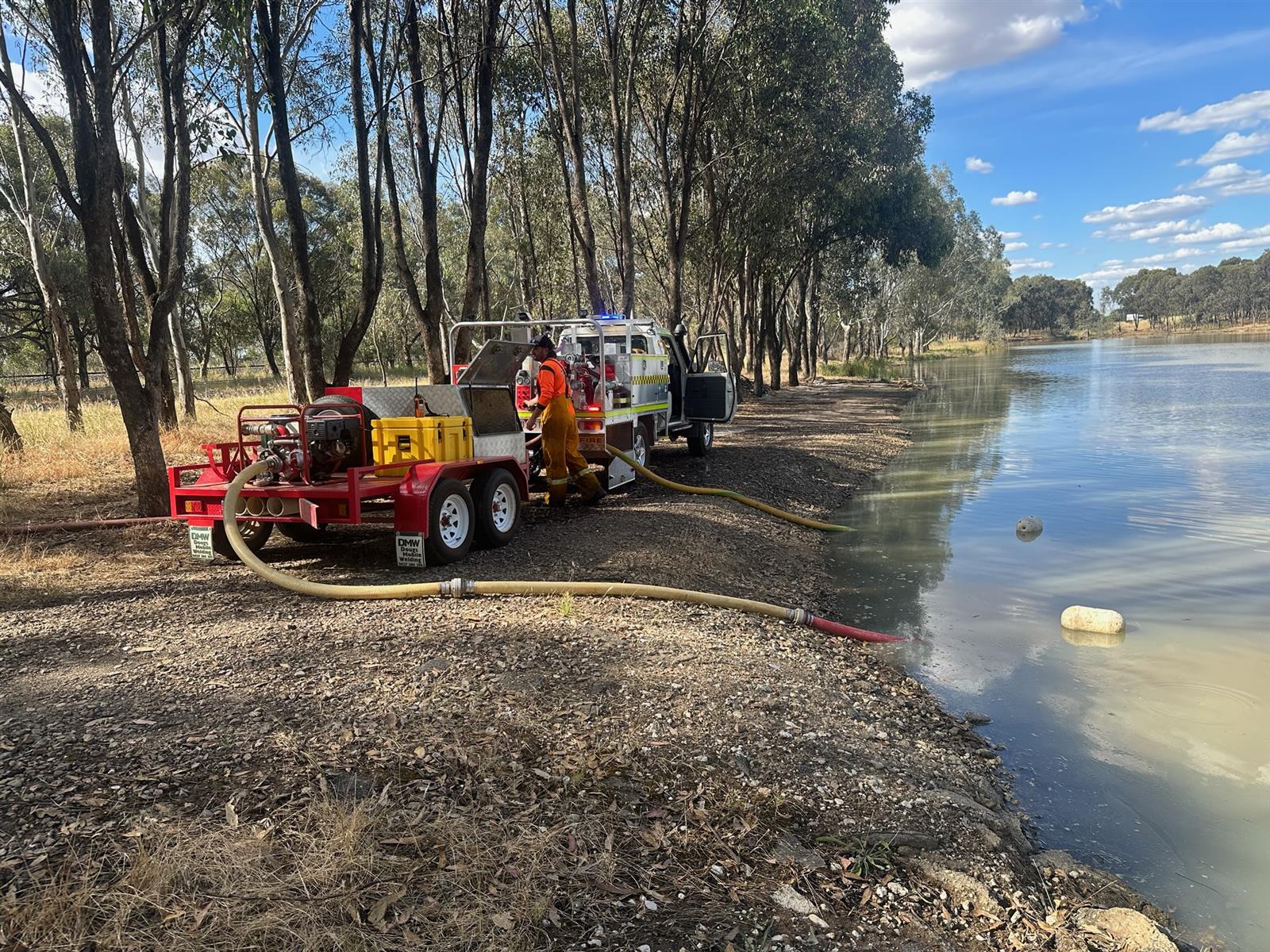.jpg) Freeway jobs are always challenging
Freeway jobs are always challenging
Members of Wangaratta North Fire Brigade were paged in the afternoon of 27 November to a fire on the Hume Freeway, north of Wangaratta.
A thick, strong column of black smoke was visible from 20 kilometres away, as a result of a truck and trailer fire in the northbound lanes of the freeway. The cargo on the trailer (a Nissan Patrol, a camper trailer and a van) were all destroyed along with the truck and trailer.
The fire spread to grass on the railway side of the road as well as into the median strip.
CFA Commander Scott Connor, and a Wangeratta North brigade member, was first on scene and quickly set up a control point. The initial page for Wangeratta North, Wangaratta and Fire Rescue Victoria Pumper 74 was soon changed to add Bowser, Springhurst and El Dorado brigades.
The Wangaratta field command vehicle also deployed to support the breathing apparatus operations.
In all, nine CFA vehicles, plus an FRV pumper, attended.
Fires on the freeway are always complex and difficult tasks. Vehicle transport fires bring an element of uncertainty with the potential cargo involved. Water is often difficult to access and is usually kilometres away. Traffic is inevitably a huge factor in managing the incident safely, and the added pressure of blocking the arterial flow of vehicles on one of Australia’s most important highways is ever present.
The FRV pumper and its crew played a key role in dealing with the engulfed truck. Crews worked hard in the warm conditions and most left nothing in the tank, doing their best to contain an incident with the potential to spread. CFA tankers from Wangeratta North and Wangaratta set up to relay water to the FRV pumper, while other crews stopped the spread of the grassfire and became water carriers.
Water soon became scarce and establishing a quickfill point on the small lake on the north side of the Bowser interchange was an important tactical move. Early work by Wangeratta North Captain Mark Connor made sure the quickfill appliance was on scene from the outset for just this eventuality.
Northbound traffic was diverted onto Federation Way, but a long line of vehicles remained locked in a holding pattern north of Bowser. Navigating the water-carrying tankers past the parked vehicles to and from the fill point had its challenges. The parked traffic was moved on when conditions allowed, but the freeway remained closed and traffic diverted until after 10pm.
The interagency cooperation was terrific, each knowing their role and ensuring good communication was in place. Victoria Police was on scene in force and delegated specific tasks among its own officers that kept the fire attack free of complications as much as possible.
Emergency management team meetings between the agency commanders, police, FRV and CFA were held often and built the framework for a successful result.
The vehicles were all burnt to a point that meant removal would need cranes to lift the debris rather than drag it. Often CFA crews are kept out for hours waiting on the recovery of the vehicles. But in this instance, with no further threat of fire, CFA commanders were able to stand down CFA crews and leave the long job of supervising clearing of the freeway to the police.
We can all take for granted the way our community is geared to effectively respond to serious incidents. A fire like this could easily lead to fatal consequences on the freeway and start fires that ruin farms and forest. This incident was a terrific example of a fast, coordinated response by skilled responders that stopped a larger catastrophe in its tracks.
This sort of response happens every day in Victoria and CFA brigades are part of the solution that keeps Victorians safe.
The Wangaratta Group of brigades can take great pride in what they do for their community.
.jpg) Fully engaged & going
Fully engaged & going-
 Water is the weapon
Water is the weapon
-
.jpeg) Aftermath
Aftermath
-
-
| Submitted by |
Lachlan Gales |